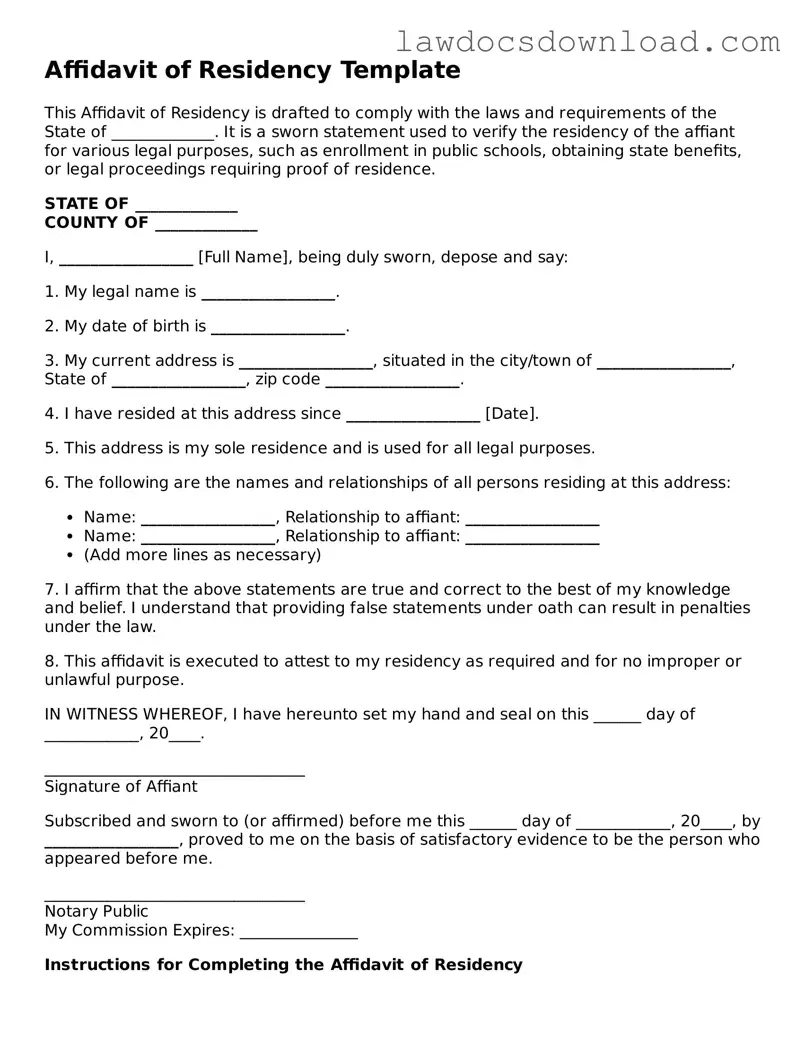Affidavit of Residency Template
This Affidavit of Residency is drafted to comply with the laws and requirements of the State of _____________. It is a sworn statement used to verify the residency of the affiant for various legal purposes, such as enrollment in public schools, obtaining state benefits, or legal proceedings requiring proof of residence.
STATE OF _____________
COUNTY OF _____________
I, _________________ [Full Name], being duly sworn, depose and say:
1. My legal name is _________________.
2. My date of birth is _________________.
3. My current address is _________________, situated in the city/town of _________________, State of _________________, zip code _________________.
4. I have resided at this address since _________________ [Date].
5. This address is my sole residence and is used for all legal purposes.
6. The following are the names and relationships of all persons residing at this address:
- Name: _________________, Relationship to affiant: _________________
- Name: _________________, Relationship to affiant: _________________
- (Add more lines as necessary)
7. I affirm that the above statements are true and correct to the best of my knowledge and belief. I understand that providing false statements under oath can result in penalties under the law.
8. This affidavit is executed to attest to my residency as required and for no improper or unlawful purpose.
IN WITNESS WHEREOF, I have hereunto set my hand and seal on this ______ day of ____________, 20____.
_________________________________
Signature of Affiant
Subscribed and sworn to (or affirmed) before me this ______ day of ____________, 20____, by _________________, proved to me on the basis of satisfactory evidence to be the person who appeared before me.
_________________________________
Notary Public
My Commission Expires: _______________
Instructions for Completing the Affidavit of Residency
- Fill in all the blanks with accurate information pertaining to the affiant's personal and residency details.
- Ensure that the full legal name and current residential address are reflected as per official documents.
- Identify all the individuals residing at the same address, including their relationship to the affiant.
- Review the affidavit thoroughly to guarantee that all provided information is true and correct.
- Sign the affidavit in the presence of a Notary Public to acknowledge its validity and the truthfulness of the statements included.
